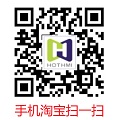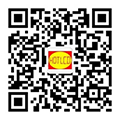LCD screens are used in many devices in our lives. LCD refers to Liquid crystal display, which is a general term for liquid crystal display technology. According to the driving mode, it is divided into three types: static drive, simple matrix drive and active matrix drive. According to the different rotation angles of liquid crystal molecules in the liquid crystal box, we divide the LCD screen into different working modes. Different working modes will make the display effect of the screen different.
TN (Twisted Nematic) is a new liquid crystal material developed after DSM type liquid crystal material. The emergence of TN laid the foundation for the main development of LCD today. Subsequent HTN, STN, FSTN, DFSTN, etc. are all derived from TN. The difference between them lies in the arrangement of liquid crystal, twist angle and circuit.
TN, HTN, STN, FSTN, DFSTN, the structure is basically the same, TN is generally 90 degrees twist, HTN is 90 ~ 120 degrees twist, STN is 180 ~ 270 degrees twist, FSTN, DFSTN, are STN, with different twist angles and polarizer angles, STN LCD screen has yellow-green mode, blue mode, gray mode, etc.; while TN LCD screen is positive and negative, etc. FSTN, DFSTN appearance is black or white, FSTN is STN with film compensation (film compensated STN), DFSTN uses double FSTN structure to achieve black and white display.
The core feature of VA liquid crystal is that its liquid crystal molecules are arranged perpendicular to the glass substrate, that is, in the voltage-free state, the liquid crystal molecules are arranged vertically.
Integrate and analyze the differences between these different models from different aspects
Type | Display Effect | Viewing Angle | Price | application | Drive channels | advantage | shortcoming |
TN |
Gray, yellow-green, |
30~50° |
Cheap |
Segment screen |
1/8 | Cheap mold making, low unit price, low power consumption, can be used with TFT to become an active matrix display, fast response time, low technical entry threshold | Cannot produce high-frequency signals, poor viewing angle, poor contrast, unrealistic color performance |
TN- |
Black bottom |
30~50° |
Cheap | Segment screens, electronic watches, calculators, game consoles, etc. LCDs are mostly TN-LCD |
1/8 | Cheap mold opening, low unit price, low power consumption | Cannot make high-pass, poor viewing angle, poor contrast, background color is limited to black |
HTN |
Yellow green, gray | 60°~70° | Between TN screen and STN screen, moderate cost performance |
Segment screen, general instrument or meter |
1/8 | Compared with TN screen, it has a wider viewing angle, low cost, low power consumption, easy production, and a wide range of applications. | Poor contrast, average display effect, not suitable for manufacturing high-drive LCD |
STN |
Gray background, yellow-green background | 150° | Medium price: yellow-green film and blue film are the same price; gray film is more expensive | Segment screen, dot matrix screen, STN LCD screen, high-end instruments or meters, wire welding machines, notepads, etc. |
1/240 | High driving capability, large amount of displayed information, wide viewing angle, diversified display modes, and wide range of applications | Process equipment, high requirements, low yield, high raw material requirements, high cost |
STN- | Light font on dark blue background | 150° | Medium price | Segment screen, dot matrix screen | 1/240 | High driving capability | Process equipment, high requirements, low yield, high raw material requirements, high cost |
FSTN |
Gray and white background, red, green and blue background, black text, | 150° |
Slightly expensive |
Dot matrix screen, wide range of use, |
1/240 | Good background color, wide viewing angle, semi-transparent and semi-reflective, sunlight visible, high-number dot matrix, can display any graphics | The background color is not pure enough; the response time is slow; the color will change due to high temperature; the power consumption is high; the cost is high, and it is only used in passive matrix and cannot be used with TFT to become active matrix; |
DFSTN- |
Black background: font and backlight color are the same | 150° |
Relatively expensive |
Dot matrix screen |
1/240 | It is a cool compensation black film for FSTN, which can resist the influence of temperature and always maintain high contrast, making up for the disadvantage that FSTN color is affected by high temperature. | Colors are available now, only black background; expensive |
VA |
Black background with white text | 100° |
expensive |
Segment Code |
1/8; 1/16(Applicable only to character dot matrix module) | Pure black background, excellent contrast, good color effect, solves the problem of TN-screen being "not black enough" and the viewing angle problem of TN+ screen. | Pure black background, excellent contrast, good color effect, solves the problem of TN-screen being "not black enough" and the viewing angle problem of TN+ screen. |
Perspective increasing relationship:TN<HTN<VA<STN&FSTN(DFSTN-)
Positive mode and negative mode:
Positive mode: semi-transmissive and semi-reflective, backlight-free, low voltage, low power consumption, visible in all environments
Negative mode: fully transparent polarizer mode, backlight required, brightness above 800 nits to be visible in sunlight
Reaction speed comparison:TN>HTN>STN>FSTN>VA
Contrast:VA>FSTN(DFSTN-)>STN>HTN>TN
Note: The above analysis is for reference only.
Hot Display has been focusing on the research and development and production of LCD screens for 20 years. We have a complete range of product models for the above models. For more information, please contact us directly!







 Search
Search





